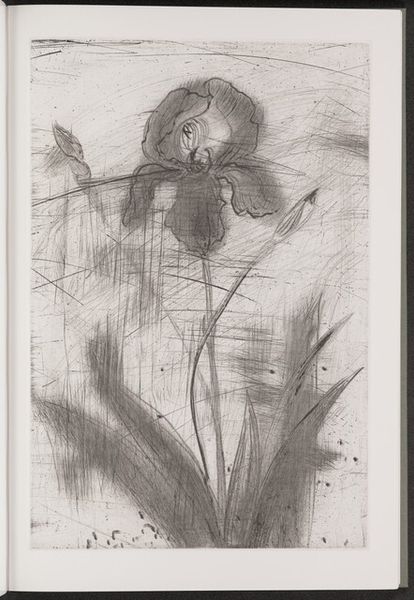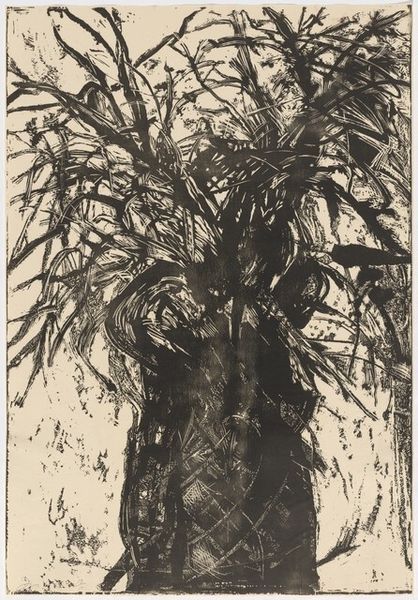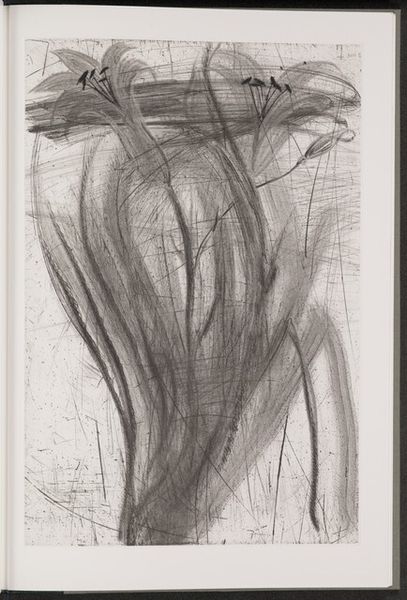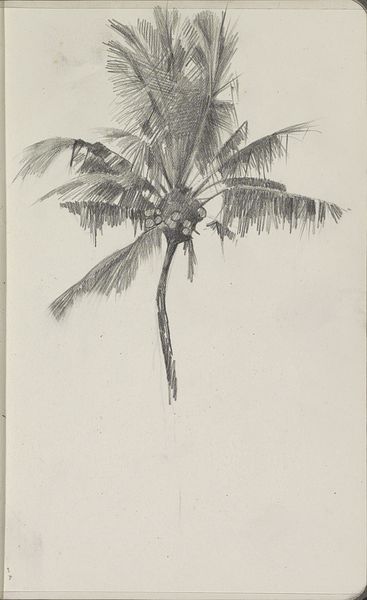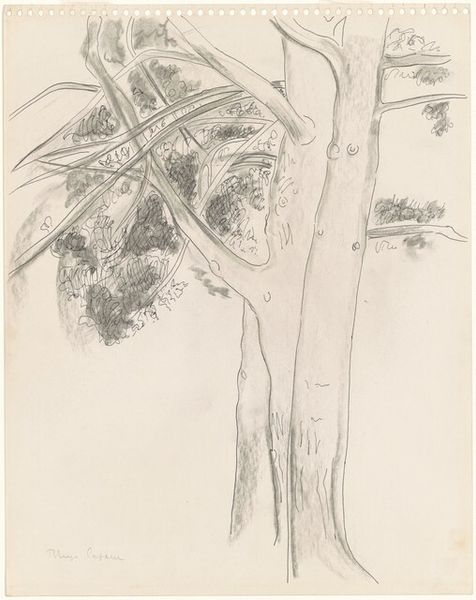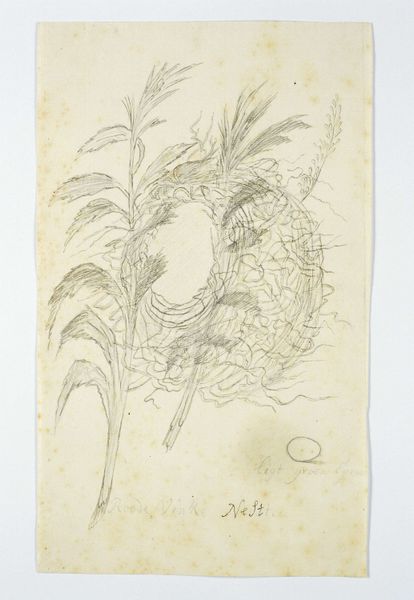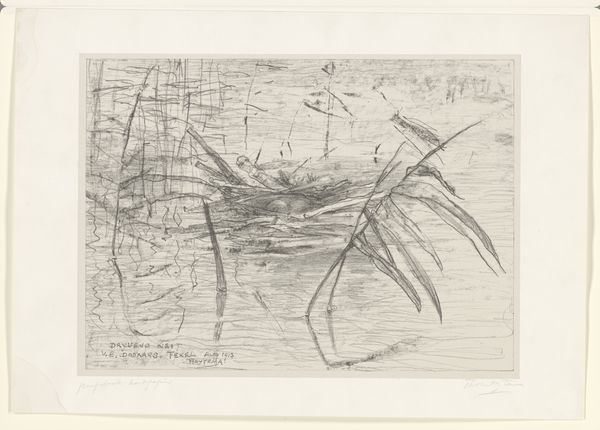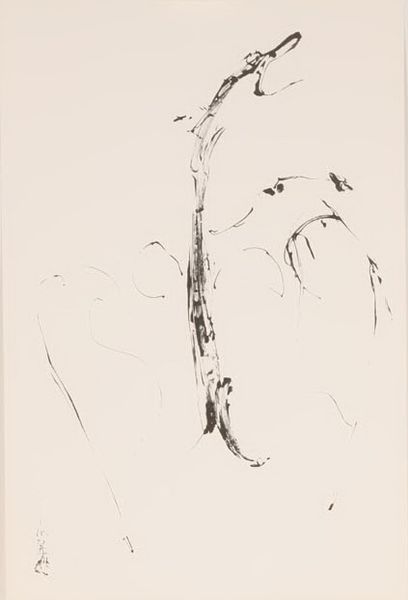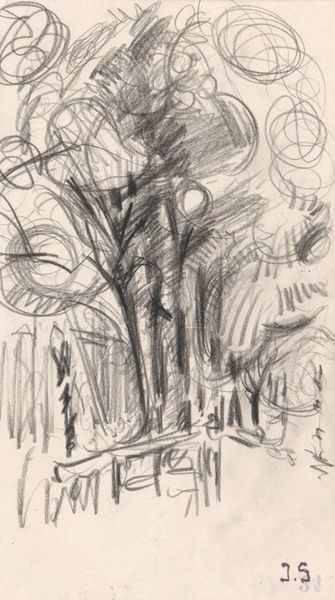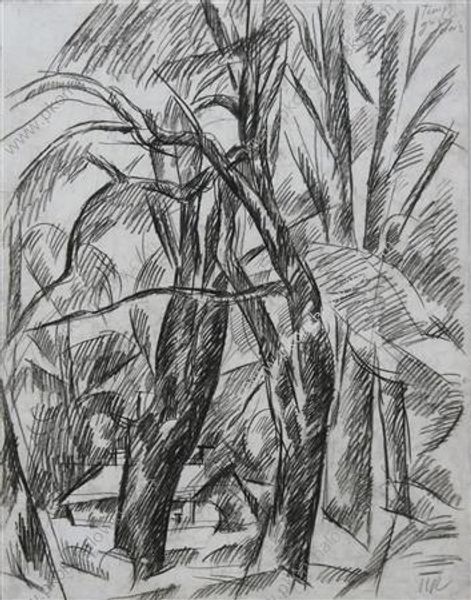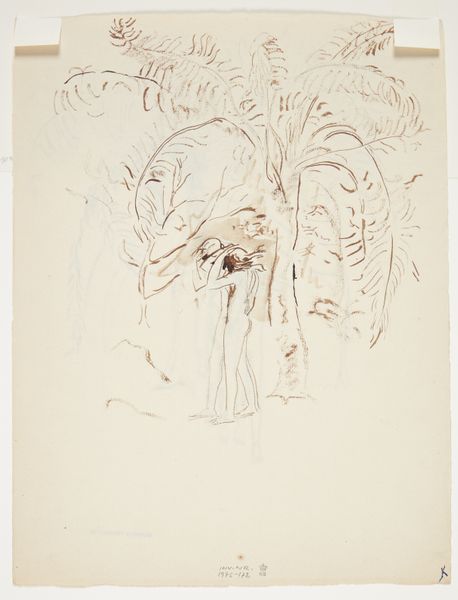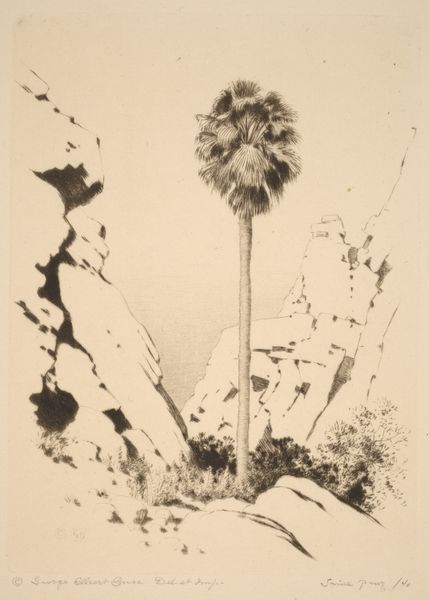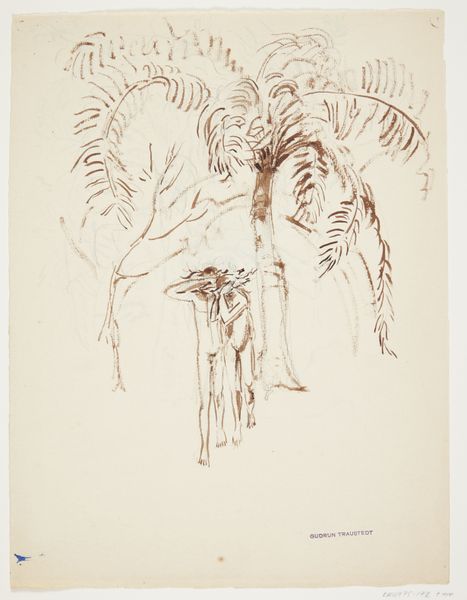
drawing, print, etching, graphite
#
drawing
# print
#
pen sketch
#
etching
#
pencil sketch
#
landscape
#
graphite
Dimensions: plate: 45.6 x 30.5 cm (17 15/16 x 12 in.) page size: 52 x 35.5 cm (20 1/2 x 14 in.)
Copyright: National Gallery of Art: CC0 1.0
Editor: Jim Dine’s "Shooting-Star," created in 1984, appears to be an etching or graphite drawing, and what strikes me is the contrast between the detailed texture of the palms and the almost chaotic network of lines in the background. How do you interpret this work? Curator: Well, observe how Dine employs line here. The density varies significantly, doesn’t it? In the lower portion of the work, we find an almost aggressive application of graphite or etching, creating a weight, an undeniable groundedness. Compare that to the delicacy, the relative sparsity, of the lines that form the palm fronds and the background. Notice the texture achieved—almost feathery in places. What does that juxtaposition suggest to you formally? Editor: Perhaps a deliberate imbalance? The heavier base contrasts so strongly with the lighter, almost ethereal top, that it creates tension, visually anchoring what might otherwise float away. Curator: Precisely! Consider the "background," those seemingly random lines. They're not simply background, are they? They interact with the central forms. These etched marks define and confine the representational palm tree using what could be interpreted as semiotic language. They carve the palm into a specific form through visual constraints, delineating space and contributing to its material form. They provide an alternative context in which we are allowed to "see" the tree. The success here relies not on accurate rendering of space and objecthood but rather relies on creating meaning through symbolic lines and etching techniques. Editor: So it's the interplay of these formal elements—line, texture, contrast—rather than a representational goal, that defines the work? Curator: Exactly. And remember that the title "Shooting-Star" is not descriptive. It prompts one to view how such titles act in art and how a change of the work’s title impacts its interpretation. Ultimately, our interest here hinges on understanding this semiotic structure. Editor: I never thought about it that way before. Looking closely at how Dine uses the lines to construct the image has really opened my eyes. Curator: Mine as well, let us reflect more on his portfolio now!
Comments
No comments
Be the first to comment and join the conversation on the ultimate creative platform.
